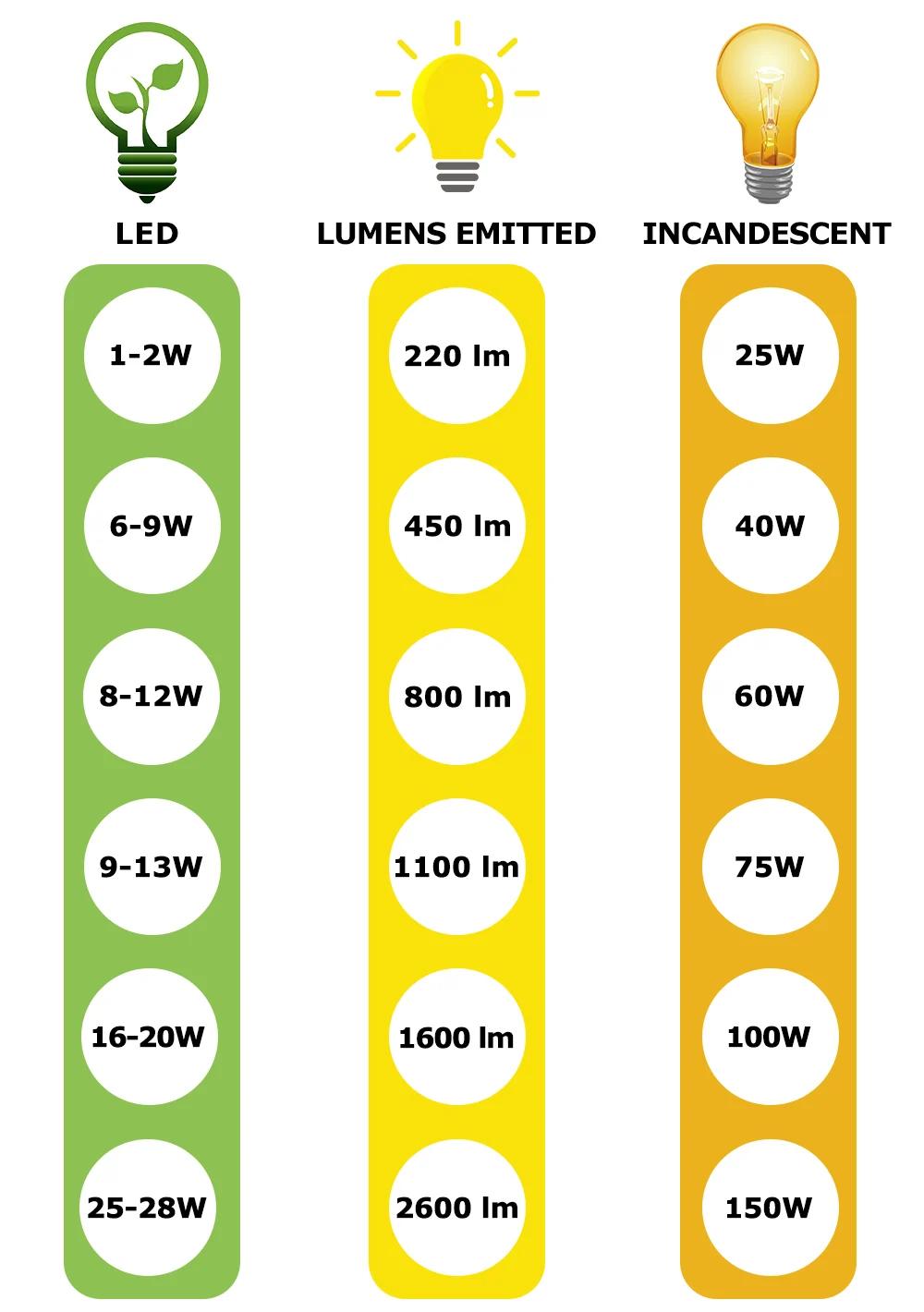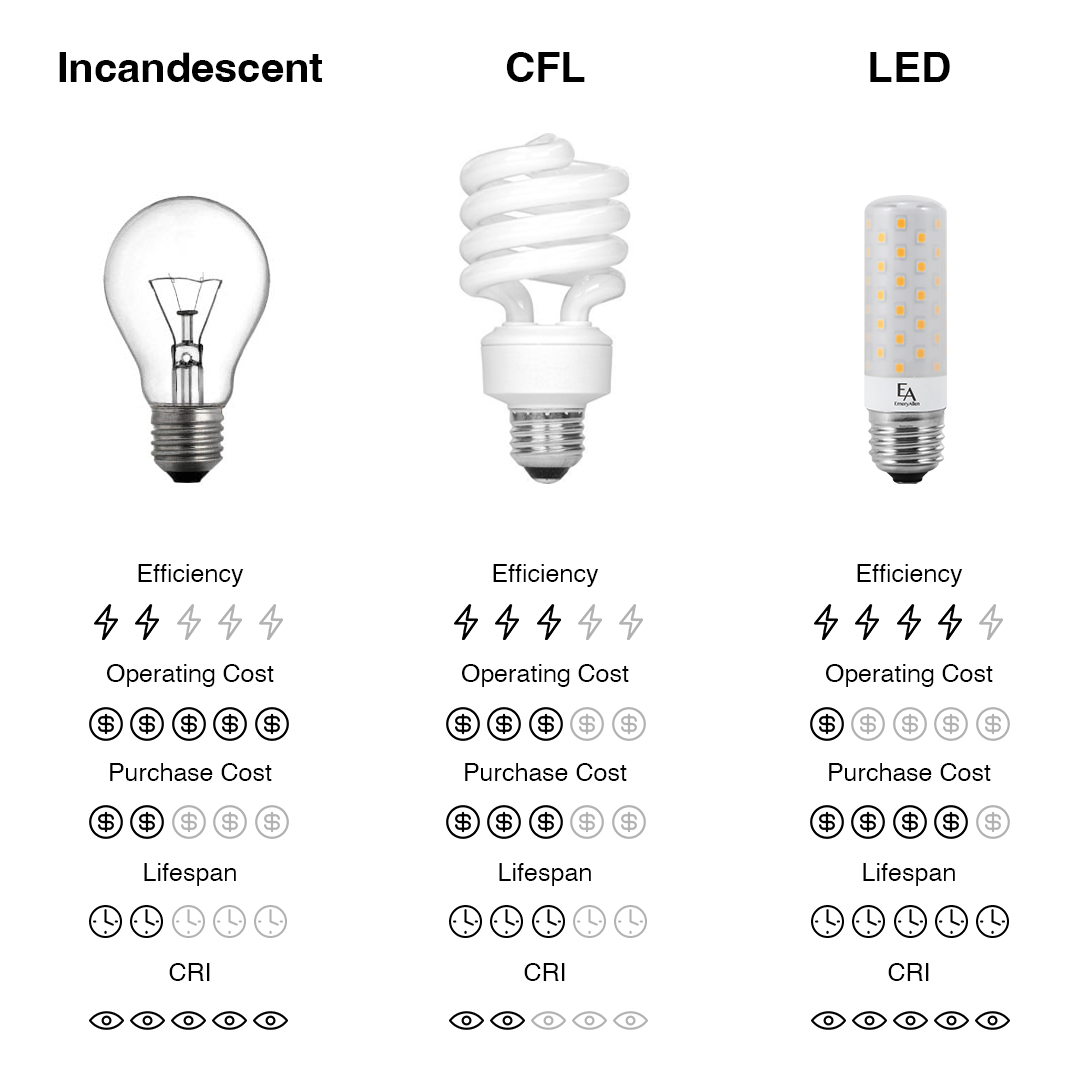Introduction
As the world increasingly prioritizes sustainability, one of the most effective strategies for energy conservation and carbon emission reduction is the adoption of LED lighting. LED (Light Emitting Diode) technology has revolutionized the lighting industry by offering energy-efficient, long-lasting, and eco-friendly alternatives to traditional lighting solutions such as incandescent and fluorescent bulbs. This article explores the significant impact of LED lighting on energy savings and the reduction of carbon emissions, making it an essential component in the global movement towards environmental sustainability.
1. Energy Efficiency: The Core Benefit of LED Lighting
One of the primary advantages of LED lighting is its exceptional energy efficiency. Compared to traditional incandescent bulbs, LED lights consume up to 85% less energy, providing the same amount of illumination. This massive energy savings translates to lower electricity bills, reduced dependence on fossil fuels, and less strain on the energy grid.
Incandescent bulbs: Typically convert only 10% of energy into light, with the remaining 90% wasted as heat.
LEDs: Convert around 80-90% of electrical energy into light, with only a small portion wasted as heat, drastically improving energy usage efficiency.
As a result, businesses, residential buildings, and public infrastructure that switch to LED lighting can significantly lower their overall energy consumption.

2. Reduction in Carbon Emissions: Contributing to a Greener Future
Energy production, particularly from fossil fuels, is the largest contributor to global carbon emissions. By consuming less energy, LED lights indirectly reduce the carbon footprint associated with electricity generation.
For example, switching to LED lighting can lower the carbon emissions of a typical commercial building by up to 75% compared to using incandescent lighting. This reduction in emissions contributes to the broader effort of combating climate change and meeting global carbon reduction targets.
How LED Lighting Reduces Carbon Emissions:
Lower energy consumption means fewer greenhouse gases emitted from power plants.
In commercial spaces, LED lighting systems can reduce a building’s overall carbon emissions, supporting sustainability goals and helping businesses comply with environmental regulations.
Smart controls like motion sensors, dimmers, and timers used with LED systems can further reduce energy use by ensuring lights are only on when needed.
3. Long Lifespan and Reduced Waste
In addition to energy savings, LED lights have a much longer lifespan compared to traditional bulbs. An average LED bulb can last up to 50,000 hours or more, while an incandescent bulb typically lasts only about 1,000 hours.
This longer lifespan translates to:
Fewer replacements, reducing the environmental impact associated with manufacturing and disposing of light bulbs.
Reduced waste in landfills, as fewer bulbs are discarded.
By using long-lasting LED lights, businesses and consumers contribute to less waste generation, which is a crucial step toward more sustainable waste management practices.
4. The Role of LED Lighting in Smart Cities
As cities around the world transition to smart cities, the role of LED lighting becomes even more significant. Smart cities aim to use technology to improve urban efficiency, sustainability, and quality of life. Smart LED lighting systems, often integrated with sensors and connected to IoT networks, offer enhanced control over energy use.
Key benefits of smart LED lighting for smart cities include:
Automatic dimming and adjusting of streetlights based on traffic or environmental conditions, reducing unnecessary energy consumption.
Remote control systems allow cities to monitor and optimize their lighting networks in real time, improving efficiency and reducing waste.
The integration of solar-powered LEDs in outdoor public lighting, further reducing the reliance on the grid.
These innovations in smart LED lighting are crucial for making cities more sustainable and energy-efficient, paving the way for a future where urban environments contribute positively to the planet.
5. Cost Savings and Economic Impact
The energy savings from LED lighting also have a significant economic impact. While the initial cost of installing LED systems may be higher than traditional bulbs, the long-term savings far outweigh the upfront investment.
Businesses that adopt LED lighting often see a return on investment (ROI) within 2-3 years due to lower energy bills and reduced maintenance costs.
Governments and public infrastructure projects that switch to LED systems benefit from both cost savings and the positive environmental impact of reducing carbon emissions.
In the long run, LED lighting contributes not only to a cleaner environment but also to the economic well-being of businesses and governments by lowering operational costs and promoting sustainable development.
6. Global Trends in LED Lighting Adoption
The adoption of LED lighting is growing rapidly across industries and regions. Governments and businesses alike are increasingly recognizing the environmental and financial benefits of LED technology.
Europe and North America are leading the way, with cities and businesses implementing LED lighting retrofits in public buildings, streets, and commercial spaces.
Emerging markets in Asia, Africa, and Latin America are adopting LED solutions to meet the growing demand for sustainable lighting as urbanization increases.
International standards and policies, such as the Energy Star certification and LED quality standards, further encourage the widespread use of LEDs in both residential and commercial sectors.
Conclusion: A Bright Future for Sustainability
The shift to LED lighting represents a powerful tool in reducing energy consumption, cutting carbon emissions, and advancing global sustainability goals. By choosing LED lighting, businesses, governments, and individuals contribute significantly to environmental conservation while enjoying long-term cost savings.
As the world continues to battle climate change, LED lighting is one of the simplest and most effective solutions we have to create a more sustainable future. The energy-efficient, long-lasting, and eco-friendly nature of LEDs makes them an essential part of any comprehensive sustainability strategy.
Why Choose Emilux Light for Your LED Solutions?
High-performance LED lighting designed for maximum energy savings and environmental impact
Customizable solutions for commercial, residential, and public infrastructure projects
Commitment to sustainability with eco-friendly products
To learn more about how Emilux Light can help reduce your energy consumption and carbon footprint with premium LED lighting solutions, contact us today for a free consultation.

Post time: Feb-17-2025









